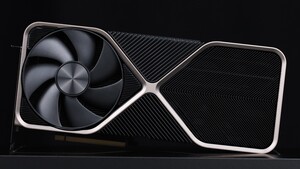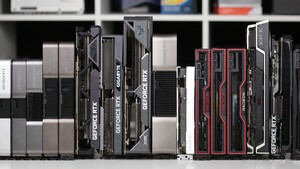_________________________________________________________________________________________________________
CONCLUSION
_________________________________________________________________________________________________________
Your system appears to be having trouble handling real-time audio and other tasks. You are likely to experience buffer underruns appearing as drop outs, clicks or pops. One problem may be related to power management, disable CPU throttling settings in Control Panel and BIOS setup. Check for BIOS updates.
LatencyMon has been analyzing your system for 0:07:45 (h:mm:ss) on all processors.
_________________________________________________________________________________________________________
SYSTEM INFORMATION
_________________________________________________________________________________________________________
Computer name: katz9r-PC
OS version: Windows 7 Service Pack 1, 6.1, build: 7601 (x64)
Hardware: ASRock, P67 Pro3
CPU: GenuineIntel Intel(R) Core(TM) i5-2500K CPU @ 3.30GHz
Logical processors: 4
Processor groups: 1
RAM: 8153 MB total
_________________________________________________________________________________________________________
CPU SPEED
_________________________________________________________________________________________________________
Reported CPU speed: 3292,0 MHz
Measured CPU speed: 2403,0 MHz (approx.)
Note: reported execution times may be calculated based on a fixed reported CPU speed. Disable variable speed settings like Intel Speed Step and AMD Cool N Quiet in the BIOS setup for more accurate results.
_________________________________________________________________________________________________________
MEASURED INTERRUPT TO USER PROCESS LATENCIES
_________________________________________________________________________________________________________
The interrupt to process latency reflects the measured interval that a usermode process needed to respond to a hardware request from the moment the interrupt service routine started execution. This includes the scheduling and execution of a DPC routine, the signaling of an event and the waking up of a usermode thread from an idle wait state in response to that event.
Highest measured interrupt to process latency (µs): 11028,176899
Average measured interrupt to process latency (µs): 3,146775
Highest measured interrupt to DPC latency (µs): 394,663183
Average measured interrupt to DPC latency (µs): 1,219897
_________________________________________________________________________________________________________
REPORTED ISRs
_________________________________________________________________________________________________________
Interrupt service routines are routines installed by the OS and device drivers that execute in response to a hardware interrupt signal.
Highest ISR routine execution time (µs): 288,366343
Driver with highest ISR routine execution time: dxgkrnl.sys - DirectX Graphics Kernel, Microsoft Corporation
Highest reported total ISR routine time (%): 0,222228
Driver with highest ISR total time: dxgkrnl.sys - DirectX Graphics Kernel, Microsoft Corporation
Total time spent in ISRs (%) 0,326810
ISR count (execution time <250 µs): 1003318
ISR count (execution time 250-500 µs): 0
ISR count (execution time 500-999 µs): 2
ISR count (execution time 1000-1999 µs): 0
ISR count (execution time 2000-3999 µs): 0
ISR count (execution time >=4000 µs): 0
_________________________________________________________________________________________________________
REPORTED DPCs
_________________________________________________________________________________________________________
DPC routines are part of the interrupt servicing dispatch mechanism and disable the possibility for a process to utilize the CPU while it is interrupted until the DPC has finished execution.
Highest DPC routine execution time (µs): 337,262151
Driver with highest DPC routine execution time: ndis.sys - NDIS 6.20-Treiber, Microsoft Corporation
Highest reported total DPC routine time (%): 0,147224
Driver with highest DPC total execution time: USBPORT.SYS - USB 1.1 & 2.0-Porttreiber, Microsoft Corporation
Total time spent in DPCs (%) 0,465419
DPC count (execution time <250 µs): 3268634
DPC count (execution time 250-500 µs): 0
DPC count (execution time 500-999 µs): 21
DPC count (execution time 1000-1999 µs): 0
DPC count (execution time 2000-3999 µs): 0
DPC count (execution time >=4000 µs): 0
_________________________________________________________________________________________________________
REPORTED HARD PAGEFAULTS
_________________________________________________________________________________________________________
Hard pagefaults are events that get triggered by making use of virtual memory that is not resident in RAM but backed by a memory mapped file on disk. The process of resolving the hard pagefault requires reading in the memory from disk while the process is interrupted and blocked from execution.
NOTE: some processes were hit by hard pagefaults. If these were programs producing audio, they are likely to interrupt the audio stream resulting in dropouts, clicks and pops. Check the Processes tab to see which programs were hit.
Process with highest pagefault count: searchindexer.exe
Total number of hard pagefaults 1303
Hard pagefault count of hardest hit process: 442
Highest hard pagefault resolution time (µs): 100006,831713
Total time spent in hard pagefaults (%): 0,040009
Number of processes hit: 17
_________________________________________________________________________________________________________
PER CPU DATA
_________________________________________________________________________________________________________
CPU 0 Interrupt cycle time (s): 24,453856
CPU 0 ISR highest execution time (µs): 288,366343
CPU 0 ISR total execution time (s): 6,085088
CPU 0 ISR count: 1003320
CPU 0 DPC highest execution time (µs): 337,262151
CPU 0 DPC total execution time (s): 8,256564
CPU 0 DPC count: 3188398
_________________________________________________________________________________________________________
CPU 1 Interrupt cycle time (s): 3,096196
CPU 1 ISR highest execution time (µs): 0,0
CPU 1 ISR total execution time (s): 0,0
CPU 1 ISR count: 0
CPU 1 DPC highest execution time (µs): 248,230863
CPU 1 DPC total execution time (s): 0,122357
CPU 1 DPC count: 22972
_________________________________________________________________________________________________________
CPU 2 Interrupt cycle time (s): 9,711436
CPU 2 ISR highest execution time (µs): 0,0
CPU 2 ISR total execution time (s): 0,0
CPU 2 ISR count: 0
CPU 2 DPC highest execution time (µs): 256,451094
CPU 2 DPC total execution time (s): 0,128635
CPU 2 DPC count: 22361
_________________________________________________________________________________________________________
CPU 3 Interrupt cycle time (s): 7,008545
CPU 3 ISR highest execution time (µs): 0,0
CPU 3 ISR total execution time (s): 0,0
CPU 3 ISR count: 0
CPU 3 DPC highest execution time (µs): 233,700486
CPU 3 DPC total execution time (s): 0,158377
CPU 3 DPC count: 34924
____________________________________________________________________________________________________



